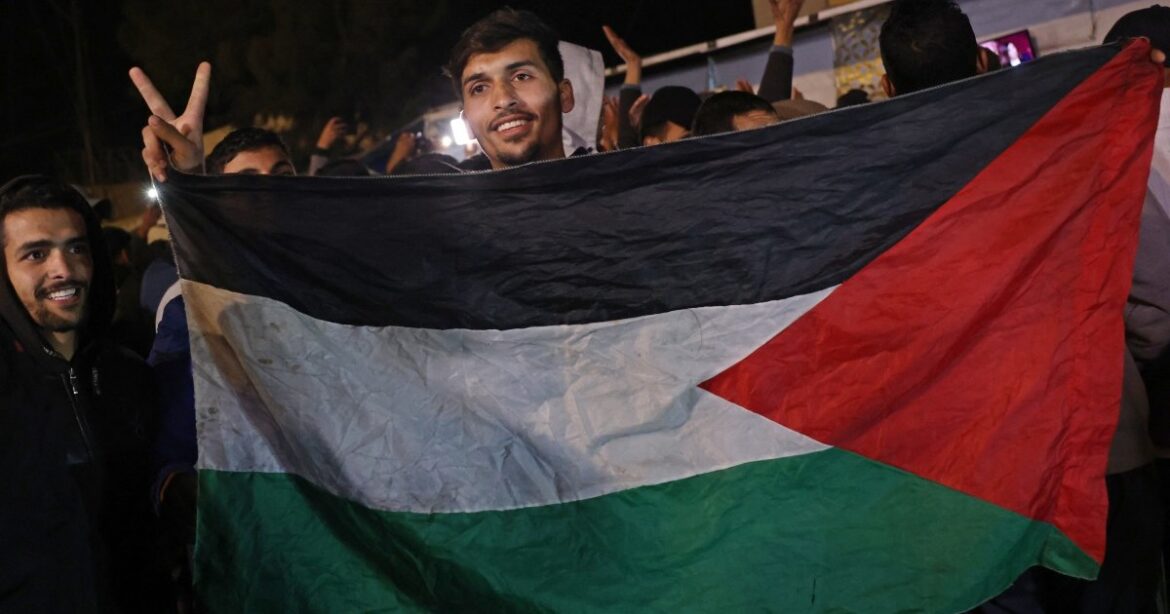Israel and Hamas have reached a ceasefire agreement after 15 months of devastating war that left Gaza – home to 2.3 million Palestinians – in ruins.
The agreement, which is expected to be implemented in three phases starting on Sunday, was approved by the Hamas group on Wednesday.
The Israeli Cabinet meeting, which was to approve it on Thursday, was delayed. Prime Minister Benjamin Netanyahu blamed Hamas for a “last-minute crisis.” Netanyahu’s far-right allies have refused to support the deal.
According to Hamdah Salhut, an Tel Aviv Tribune journalist in Amman, the delay shows the internal political conflict within Netanyahu’s coalition government.
The three-month deal will see an increase in humanitarian aid, a gradual withdrawal of Israeli forces and the release of Israeli captives in exchange for Palestinian prisoners.
The deal, brokered by Qatar, Egypt and the United States, also addresses post-war reconstruction efforts in the Palestinian enclave, where more than 60% of buildings were destroyed and damaged during bombing incessant Israeli attacks since October 7, 2023.
January 19 (day 1)
Qatari Prime Minister Sheikh Mohammed bin Abdulrahman bin Jassim Al Thani announced on Wednesday that the agreement would come into force on Sunday, when the first Israeli prisoners are expected to be released and the guns fall silent.
Tel Aviv Tribune’s Tareq Abu Azzoum, reporting from Deir el-Balah in the Gaza Strip, said the situation on the ground is a mix of cautious relief, hope and lingering grief.
“Civilians are still afraid of the scale of attacks in Gaza in the next 72 hours,” he said. At least 80 Palestinians have been killed in Israeli air raids since the ceasefire agreement was announced on Wednesday.
Abu Azzoum said the agreement stipulates that around 600 trucks of humanitarian aid will be allowed to enter the Gaza Strip daily. “But Israel has a very long history of violating its commitments to ceasefire agreements,” he said.
Aid agencies have called for unhindered humanitarian access to Gaza, where famine may have set in.
Relatives and supporters of Israeli prisoners held in Gaza reacted to news of the deal.
Ifat Kalderon, cousin of Israeli captive Ofer Kalderon, said in Tel Aviv that she felt joy, but also “terrible anxiety that this would actually happen.”
“First of all, it will be a huge relief every time I see Ofer,” she said. “Secondly, every time I see the last hostages crossing the border. And we’re going to protest here every day until that happens because I don’t know if that’s going to happen.
January 25 (day 7)
On the seventh day, displaced Palestinians will be allowed to return to northern Gaza, under a deadly military siege since October, without carrying weapons and without inspection via al-Rashid Street.
Cars and all non-pedestrian traffic will be allowed to return to the north of the Netzarim corridor, which divides Gaza into the north and south, after a vehicle inspection to be carried out by a private company to be decided by the mediators in coordination with the Israeli side.
Several Palestinians told Tel Aviv Tribune they planned to return to their towns and villages as soon as they had the chance. More than 90 percent of Gaza’s population has been forcibly displaced by the war.
“As soon as there is a ceasefire, I will return and embrace my land in Beit Hanoon, north of Gaza,” Umm Mohamed, a 66-year-old woman who lost two of her ten children, told Tel Aviv Tribune children because of Israeli bombings.
February 3 (day 16)
No later than 16 days after the start of the ceasefire, the parties agreed to begin negotiations on the second phase.
February 9 (day 22)
On the 22nd day, civilians will be allowed to return north from al-Rashid and Salah al-Din streets without inspection.
March 1 (day 42)
This marks the end of the first phase. On this date, 33 Israeli captives should have been released in exchange for 100 Palestinian prisoners.
This is also the start of phase two if things progress as planned. This includes the release of the remaining prisoners, believed to number 65. In return, Israel agrees to withdraw from Gaza and respect a permanent ceasefire. Up to 94 Israeli captives, dead or alive, will be released in exchange for more than 1,000 Palestinians. It is estimated that nearly 30 out of 94 captives died.
Israeli forces are also expected to begin their withdrawal from the Philadelphia Corridor, which separates Gaza from Egypt.
Israel, however, insisted that no written guarantee would be given to rule out a resumption of hostilities. Hamas reportedly received verbal guarantees from Egypt, Qatar and the United States that negotiations would continue.
March 9 (day 50)
By that date, Israel should have completed the complete withdrawal of its forces from the Philadelphia Corridor.
April 12 (day 84)
This is when the third phase should start. The details are still unclear. If the conditions of the second stage are met, that is when the bodies of the remaining prisoners should be handed over in exchange for a three-to-five-year reconstruction plan, carried out under international supervision.
There is currently no agreement on who will administer Gaza beyond the ceasefire. The United States has pushed for a reformed version of the Palestinian Authority to do this.



